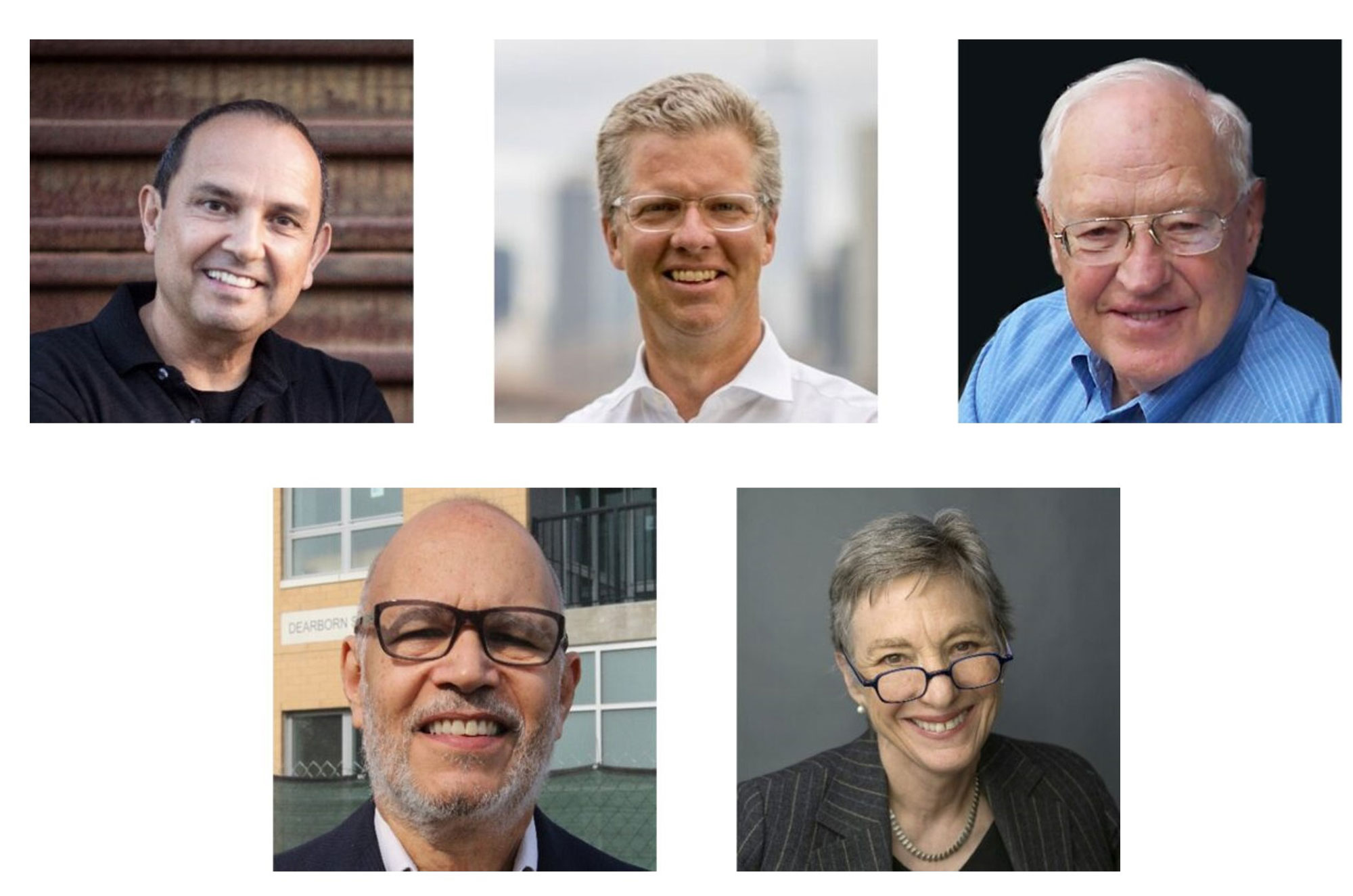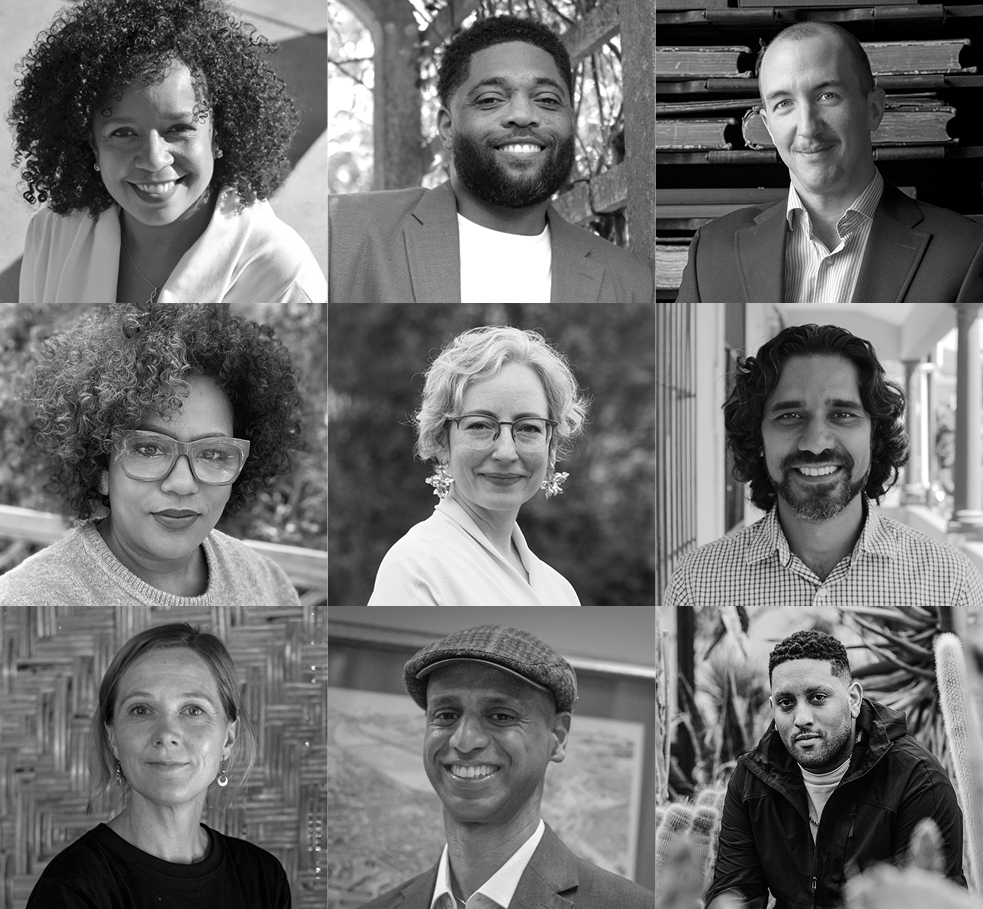Adam Longenbach Receives 2023 Carter Manny Award Citation of Special Recognition
Adam Longenbach, a doctoral candidate in Architecture, Landscape Architecture, and Urban Planning, was recently honored with a Carter Manny Award citation of special recognition from the Graham Foundation . He is also a 2023–2024 Graduate Fellow in Ethics at the Edmond and Lily Safra Center for Ethics and a 2023 Harvard Horizons Scholar.
Established in 1996, the Carter Manny Award program supports the completion of outstanding doctoral dissertations on architecture and its role in the arts, culture, and society. The only pre-doctoral award dedicated exclusively to architectural scholarship, it recognizes emerging scholars whose work promises to challenge and reshape contemporary discourse and impact the field at large.
In his dissertation “Stagecraft / Warcraft: The Rise of the Military Mock Village in the American West, 1942–1953,” Longenbach investigates the mid-twentieth-century entanglement of wartime policies, government agencies, private sector collaborations, and mass media technologies that led to the rise of military “mock villages.” His work connects this history to the ongoing production and operation of mock villages by militaries and police forces around the world, questioning what it means to replicate the built environment for the purpose of enacting violence in and against it.
Before coming to Harvard, Longenbach practiced for nearly a decade in several design offices, including Olson Kundig Architects, Allied Works Architecture, and Snøhetta, where he was the director of post-occupancy research. His writing can be found in Thresholds, The Avery Review, and Log, among others.
Martin Bechthold, Holly Samuelson, and Amy Whitesides Receive Project Funding from the Salata Institute Seed Grant Program
The GSD’s Martin Bechthold, Holly Samuelson, and Amy Whitesides are among the grant recipients of the first Salata Institute Seed Grant Program, launched in April to enable new interdisciplinary research in climate and sustainability. The program will support 19 faculty members working across seven Harvard Schools with funding for projects ranging from exploring a new, algae-based building insulation material to researching the carbon footprint of AI-driven computing.
Martin Bechthold, Kumagai Professor of Architectural Technology and Co-Director of the Doctor in Design Studies Program, is co-principal investigator on a project with Jennifer Lewis of the John A. Paulson School of Engineering and Applied Sciences. The team will research and develop a proof of concept for a carbon-negative insulation material made from microalgae, a cost-effective way to reduce buildings’ energy consumption and emissions.
Holly Samuelson, Associate Professor of Architecture, is the principal investigator on a project researching how architects can prioritize saving heating or cooling energy by analyzing the potential benefits of revising glass requirements. The optimal glass properties depend on not only building type and window orientation—variables already lumped together in today’s broad-brush building codes—but also properties of evolving heating systems and electricity generation.
Amy Whitesides, Design Critic in Landscape Architecture, is the principal investigator studying how forests play a crucial role in mitigating climate change. Agroforestry may offer means to diversify and protect lands that face encroachment and climate threats and often support lower-income communities. In support of the project, Whitesides will bring together landscape architects, planners, foresters, farmers, municipalities, and land management specialists.
Announcing the Harvard GSD Fall 2023 Public Program
The Harvard Graduate School of Design (GSD) announces its Fall 2023 schedule of public programs and exhibitions. Many of the season’s initiatives reflect on the relationship between design and the public good. Pritzker Architecture Prize recipient Shigeru Ban will present a lecture on balancing architectural practice and social engagement (September 19). Angela D. Brooks, housing justice advocate and president of the American Planning Association, will deliver the Rachel Dorothy Tanur Memorial Lecture (November 1). Featuring keynote speakers Germane Barnes, Renata Cherlise, Nina Cooke John, and Bryan Mason, the fifth biannual Black in Design conference (September 22–24), explores the multidimensionality of “The Black Home.” Rethinking the space of law and punishment is the focus of the Carceral Landscapes symposium (October 12–13), co-organized by the GSD and the Institute to End Mass Incarceration at Harvard Law School.
The program launches on September 12 with a release event for Harvard Design Magazine #51: “Multihyphenate,” featuring guest editors Sean Canty, Assistant Professor of Architecture, and John May, Associate Professor of Architecture, both from the GSD, and Zeina Koreitem, design faculty at the Southern California Institute of Architecture (SCI-Arc). The associated exhibition Multihyphenation will be on display at the Druker Design Gallery August 30 through October 9, 2023.
The climate emergency provides an urgent touchstone for other programs, including the exhibition Our Artificial Nature: Perspectives on Design for an Era of Environmental Change (opening October 26). The presentation will spotlight research conducted at the Harvard Center for Green Buildings and Cities . In tandem with the exhibition, the GSD will host Carson Chan, curator at the Museum of Modern Art in New York, who will engage GSD faculty in a conversation about past design speculations, current research, and practice. Kongjian Yu, Professor and Dean, College of Architecture and Landscape Architecture, Peking University, will lecture on ecological urbanism (September 14), and Tomás Folch, Design Critic in Landscape Architecture at the GSD, will discuss water in Andean cities (November 3).
The complete public program calendar appears below and can be viewed on Harvard GSD’s events calendar. Please visit Harvard GSD’s home page to sign up to receive periodic emails about the School’s public programs, exhibitions, and other news.
Fall 2023 Public Program
Multihyphenation
Exhibition associated with Harvard Design Magazine #51: “Multihyphenate”
Druker Design Gallery
August 30–October 9
Harvard Design Magazine #51: “Multihyphenate,” issue launch with editors Sean Canty, Zeina Koreitem, and John May
Frances Loeb Library
September 12, 12:30pm
Kongjian Yu
Sylvester Baxter Lecture
September 14, 6:30pm
Shigeru Ban, “Balancing Architectural Works and Public Contributions”
September 19, 6:30pm
Black in Design 2023: The Black Home
September 22–24
Tickets available through the conference website
Irma Boom and Remment Koolhaas, “Bookmaking”
September 27, 6:30pm
Michele De Lucchi, “Earth Stations: Future Sharing Architecture”
September 28, 6:30pm
Anita Berrizbeitia, “The Blue Hills: Charles Eliot’s Design Experiment (1893–1897)”
Frederick Law Olmsted Lecture
October 10, 6:30pm
Carceral Landscapes
Symposium
October 12–13
This event is co-organized by the GSD and the Institute to End Mass Incarceration at Harvard Law School
David Gissen in conversation with Sara Hendren
Loeb Lecture
October 17, 6:30pm
Manuel Salgado, “City Making”
Jaqueline Tyrwhitt Urban Design Lecture
October 24, 6:30pm
Our Artificial Nature: Perspectives on Design for an Era of Environmental Change
Exhibition
Druker Design Gallery
October 26–December 21
Angela D. Brooks
Rachel Dorothy Tanur Memorial Lecture
November 1, 6:30pm
Tomás Folch, “Hydraulic Geographies: Atlas of the Urban Water in the Andean Region”
Kiley Fellow Lecture, Room 112 Stubbins
November 3, 12:30pm
Lina Ghotmeh, “Living in Symbiosis–an Archeology of the Future”
November 6, 6:30pm
Pier Vittorio Aureli, “The Longhouse”
November 9, 6:30pm
Catherine Mosbach, “Design is a Language being Receptive being in Motion”
Aga Khan Program Lecture
November 14, 6:30pm
Opening of Our Artificial Nature: Perspectives on Design for an Era of Environmental Change
Thursday, November 16, 6:30pm
Conversation co-organized by the GSD and the Harvard Center for Green Buildings and Cities and moderated by Carson Chan, Director, Emilio Ambasz Institute for the Joint Study of the Built and Natural Environment, MoMA
All programs take place in Piper Auditorium, are open to the public, and will be simultaneously streamed to the GSD’s website, unless otherwise noted.
Registration is not required, unless otherwise noted. Please see individual event pages for full details and the most up-to-date information.
Welcoming 2023–2024 Pollman Fellow Tosin Fateye

The Harvard Graduate School of Design (GSD) is pleased to welcome Tosin B. Fateye as the Pollman Fellow in Real Estate and Urban Development for the 2023–2024 academic year.
Fateye is a lecturer at the Redeemer’s University, Ede, Osun State, Nigeria. Having completed his Doctor of Philosophy (PhD) in Estate Management (Real Estate Investment and Finance option) at the Obafemi Awolowo University, Ile-Ife, Osun State, Nigeria, he holds BSc and MSc degrees in Estate Management at the same University. He teaches and carries out research in the areas of real estate investment appraisal, property development and finance, and sustainable real estate. Fateye is an International Real Estate Business School (IREBS) Foundation Scholar, a corporate member of the Nigerian Institution of Estate Surveyors and Valuers (ANIVS), a member of the African Real Estate Society (AfRES), and a Registered Estate Surveyor and Valuer (RSV). Fateye’s writings have been published in real estate trade journals, and two of his conference papers have won IREBS/AfRES Best Paper Award in the Real Estate Investment and Finance, and Valuation categories in 2018 and 2021 respectively.
Fateye’s research focuses on real estate investment performance measurement using econometric models. While his previous works focused on assessing property investment performance using underlying market fundamental and technical analyses, he is interested in exploring the behavioral finance approach to evaluate real estate pricing dynamics for comprehensive and optimal investment decision-making.
One of the fellowships and prizes administered by the GSD’s Department of Urban Planning and Design, the Pollman Fellowship was established in 2002 through a gift from Harold A. Pollman. It is awarded annually to an outstanding postdoctoral graduate in real estate, urban planning, and development who spends one year in residence at the GSD as a visiting scholar.
The Black in Design Conference 2023 Receives Graham Foundation Grant
The Black Home , Black in Design Conference 2023, organized by Dora Mugerwa, Michael “MJ” Johnson, Kai Walcott, Tobi Fagbule, and Sean Canty, has been awarded a grant from the Graham Foundation for Advanced Studies in the Fine Arts . The Black in Design conference recognizes the contributions of the African diaspora to the design fields and promotes discourse around the agency of the design professions to address and dismantle the institutional barriers faced by Black communities.
The fifth biannual conference takes place September 22–24, 2023. This edition explores the multidimensionality of the Black home, which the organizers characterize as “a literal structure that shelters, as a reflection of culture and traditions, and as spaces that are not entirely physical.” Through keynote panels, workshops, and conversations, conference participants will develop a broader understanding of the Black home as part of “an effort to reinforce the ideals of Black communities living across the country and larger diaspora so that we can plan for its future.”
Founded in 1956, the Graham Foundation for Advanced Studies in the Fine Arts makes project-based grants to individuals and organizations and produces public programs to foster the development and exchange of diverse and challenging ideas about architecture and its role in the arts, culture, and society.
Honoring the 2023 GSD Alumni Council Award Winners
The Harvard University Graduate School of Design (GSD) is pleased to announce Edwin “Teddy” Cruz (MDes ’97), Shaun Donovan (AB ’87, MPA ’95, MArch ’95), William “Bill” Johnson (MLA ’57), Frank Christopher Lee (MAUD ’79), and Cathy Simon (MArch ’69) as the 2023 recipients of the Harvard GSD Alumni Award. In its third year, the award honors outstanding leadership by GSD alumni, underscoring the essential role GSD graduates play in leading change around the world. Founded and led by the GSD Alumni Council, the award recognizes and celebrates the diversity, leadership, range, and impact of GSD alumni within their communities and across their areas of practice.
A celebration of the winners will take place during the 2024 GSD Comeback: Alumni & Friends Celebration next fall.
“The GSD looks at design in all its forms, including leadership, social justice, and activism, and the Alumni Award winners have all exhibited lifelong commitments to this wide-ranging view of the field,” said Jennifer Esposito (MArch ’12), associate at Superkül and co-chair of the Alumni Award jury. “Whether advocating for women in the profession or pursuing nontraditional forms of practice and education, they are true pioneers of design.”
“This award recognizes wide leadership in design thinking, connection to the GSD experience, and exemplifying the values of the school,” said Thomas Luebke (MArch ’91), Secretary of the US Commission of Fine Arts and co-chair of the Alumni Award jury. “We’re incredibly gratified to honor Teddy, Shaun, Bill, Frank, and Cathy with this award, as their remarkable contributions and leadership have made the world a better place.
Teddy Cruz is a professor of public culture and urbanization in the Department of Visual Arts at the University of California, San Diego, and a principal in Estudio Teddy Cruz + Fonna Forman, a research-based political and architectural practice in San Diego. He is known internationally for his urban research on the Tijuana/San Diego border, advancing border neighborhoods as sites of cultural production from which to rethink urban policy, affordable housing, and public space. His honors include the Rome Prize in Architecture in 1991, the Ford Foundation Visionaries Award in 2011, a 2013 Award in Architecture from the American Academy of Arts and Letters, and the 2018 Vilcek Prize in Architecture.
“It is a great honor to be recognized by one’s peers, and in this case being acknowledged by my peers from the GSD,” Cruz said. “This recognition resonates with their commitment to expanding the design field and architectural education, theoretically and practically, to address the most urgent societal, economic, and environmental urgencies of our times, and the role architects can play in producing refreshed aesthetic and socio-spatial paradigms for advancing urban justice.”
Shaun Donovan has dedicated his life to public service, with a focus on building opportunity and fighting for people and communities too often left behind. Donovan joined the Ford Foundation as a Senior Fellow in August 2022, working with the Biden administration and partners across the country to build community capacity to ensure the Bipartisan Infrastructure Law reaches its transformative potential, especially in historically disadvantaged communities. Donovan is also a Senior Fellow at the World Resources Institute, where he is working with international humanitarian organizations to incorporate climate resilience into their work. Previously, he launched an ideas-driven campaign for mayor in his hometown of New York and served as Director of the US Office of Management and Budget (OMB) and Secretary of the US Department of Housing and Urban Development during the Obama administration.
“As a ‘lapsed architect’ who pursued a career in the nonprofit world and public service, I believe this award shows that a design education can be powerful preparation to reimagine careers beyond the traditional design professions,” Donovan said. “I will always be grateful to the GSD for changing the way I see the world and challenging me to go make it better.”
Bill Johnson has focused on environmental design issues throughout his 60-year career as a planner, designer, teacher, and academic administrator. His contributions emphasize the search for contextual fit, harmony, and community involvement in a range of problem-solving initiatives. In 1963, Bill was a cofounder of Johnson, Johnson and Roy (JJR), a multi-office, international design practice that later merged with the SmithGroup. He also served as a professor of landscape architecture (1968–1988) and as dean of the School of Natural Resources (1975–1983) at the University of Michigan. In 1992, Johnson, Johnson and Roy merged temporarily with PWP Landscape Architects, the firm of Harvard classmate Peter Walker MLA ’57. Following the completion of this Berkeley-based partnership, Bill has maintained an active consulting practice as well as a vigorous career in oil painting.
“Receiving an award of this kind is an honor beyond easy description. To be sure, any such award given by one’s peers is special indeed, and I thank all who helped make it happen!” Johnson said. “I remember so well at the end of my GSD experience when I received a surprise award, the Charles Eliot Traveling Fellowship. Now, 67 years later, another surprise GSD award is given to me. It’s a full-circle sense of completeness, and it is a great honor to receive the 2023 GSD Alumni Award. I will cherish its meaning for the rest of my life.”
Upon his graduation from the GSD, Frank Christopher Lee returned to Chicago to hone his craft working for Helmut Jahn. Four years later, he helped form the award-winning firm Johnson & Lee, Ltd. One of the major tenets of the firm was to assist communities that were underserved by the design community. Frank has participated on juries and lectured throughout America and Canada. About 13 years ago, Frank noticed that the number of African American students at the GSD had decreased, which prompted him to seek admission to the Alumni Council. During his 10-year tenure, he focused on recruitment efforts at the school and the Council itself, which resulted in a considerable increase in the number of African American students applying, being admitted, and accepting the offer of admission.
“I truly appreciate that my efforts have been acknowledged by the GSD community,” Lee said. “One can never underestimate the impact that GSD had on my career. I am very grateful.”
Cathy Simon’s 50-year career has focused on transformative design at all scales. Her award-winning work comprises design for higher and secondary education, including buildings at the University of California, Berkeley, Stanford University, and Bard College. Her institutional master plans include two (2008 and 2017) for Bard College, Harvard Futures in Allston, Stanford in Redwood City, and NYU Builds 2031. In 1985, Cathy founded SMWM, a pioneering women-owned architecture and urban design firm with offices in San Francisco and New York; in 2008, the firm merged with Perkins + Will, where she served as a senior design principal. She was elevated into the AIA’s College of Fellows in 1986, served as the Chair of the GSD Alumni Council from 1993 to 1997, and received the honor of the William A. Bernoudy Architect in Residence at the American Academy in Rome in 2015. Cathy has taught architecture at both Stanford and UC Berkeley.
“This important award recognizes my significant work as an award-winning pioneering (woman) architect with strong ties to the GSD,” Simon said. “The GSD is a place of intellectual curiosity and engagement, transformative ideas and innovation, and design acumen and boundless creativity, all instrumental in design education, practice and my own thinking. Over my many years as a practitioner and educator, the GSD has continued to nourish my mind and heart.”
Additional Leadership Transitions for the 2023-2024 Academic Year
Harvard University Graduate School of Design (GSD) announces additional leadership changes across academic programs that will go into to effect as of July 1, 2023.
Karen Janosky will serve as the Program Director of the Master in Landscape Architecture (MLA) degree programs, and
Charles Waldheim will once again serve as MLA Thesis Director.
Ed Eigen will serve as Narratives Domain Head for the Master in Design Studies degree program, joining Toni Griffin (Publics), Chris Reed (Ecologies), and Allen Sayegh (Mediums).
Announcing GSD Faculty Appointments and Promotions for the 2023-2024 Academic Year
The Harvard University Graduate School of Design is pleased to announce the following faculty appointments and promotions effective July 1, 2023:
Dana McKinney White (MArch/MUP ’17) appointed Assistant Professor of Urban Design
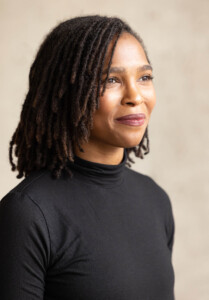
Dana McKinney White, founder of Studio KINN, and a co-founder of the enFOLD Collective, is a licensed architect and urban planner, and an outspoken advocate for social justice and equity through design. Her academic and professional work integrates wellness, policy, and economics into innovative design solutions to benefit the most vulnerable populations, including system-impacted communities, persons experiencing homelessness, and aging populations. McKinney White earned masters degrees in architecture and urban planning from the GSD, both with distinction, as well as an AB in Architecture from Princeton University. During McKinney White’s time as a student at the GSD, she helped to establish the inaugural Black in Design Conference, Map the Gap, and the African American Design Nexus. Prior to joining the GSD, McKinney White worked at Gehry Partners where she focused on the LA River Master Plan, Southeast Los Angeles Cultural Center, the Rio Hondo Confluence Area Project, and other river-related projects. During her time at Gehry Partners, Dana assisted in Frank Gehry’s Yale School of Architecture studio, “The Future of Prison,” and served as an advocate and researcher in Impact Justice’s review of the Finnish and Norwegian criminal justice systems. McKinney White subsequently served as a development manager at Adre, a purpose-driven real estate development company located in Portland, Oregon, that strives to uplift the region’s Black, Indigenous, and people of color (BIPOC) through spatial equity. She also served as a lecturer at the University of Maryland School of Architecture in their undergraduate architecture degree program and most recently as a Design Critic at the GSD.
Bas Smets appointed Professor in Practice of Landscape Architecture
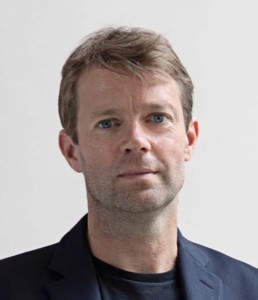
Bas Smets received a MArch and Civil Engineering degree from the University of Leuven and a MLA from the University of Geneva. Since founding his Brussels-based firm, Bureau Bas Smets, in 2007, he has completed more than 50 projects in more than 12 countries with his team of 25 architects and landscape architects. Smets builds his project teams with artists, philosophers, soils and hydrology experts, ecologists, and climate scientists. His collaborative research and evidence-based model of practice reflects an openness to experimentation and invention. In 2008 he was awarded the biennial French Prize for Young Architects and Landscape Designers, and in 2018 he was awarded the Medal for Urbanism and Public Space from the French Royal Academy of Architecture. Bureau Bas Smets more recently won perhaps the most coveted commission in all of Europe: the reimagining of the public space around the Notre-Dame in Paris, commensurate with the restoration and renewal of the fire-damaged Cathedral. The winning scheme in the two-stage competition adapts the urban microclimate of the Ile de la Cité and cathedral grounds—a primary preoccupation for Smets in all of his work. Smets’ realized projects include the park of Thurn & Taxis and the Saint-Gilles Plaza in Brussels; the public space around the Trinity Tower in Paris La Défense; the Sunken Garden and the Mandrake Hotel in London; the Himara Waterfront in Albania; and recently the Parc des Ateliers in Arles, France, a collaboration with the US practices of Annabelle Selldorf and Frank Gehry. A number of large projects are under construction, such as the urban forest around the Part Dieu station in Lyon, the Nieuw Zuid project in Antwerp, and an art park in Amagansett, New York. In each of these projects, the aim is to invent “augmented landscapes” by using the logics of nature. These augmented landscapes produce favorable adjustments to microclimates while also exploring changed atmospheres and perceptions of space.
Dan Stubbergaard appointed Professor in Practice of Urban Design
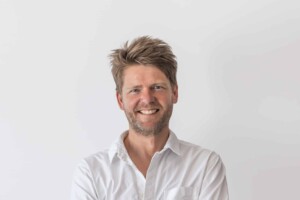
Dan Stubbergaard trained as an architect at the Royal Danish Academy of Fine Arts, School of Architecture, in Copenhagen. He founded the firm Cobe in 2006. Inspired by the transformation of Copenhagen from an industrial port city to a beacon for livability and sustainability, he is the leading figure in Cobe’s work to create cities, buildings, and landscapes that are made to outlast our generation and contribute to extraordinary everyday life. His research focuses on investigating solutions, tools, and methodologies across several topics or themes of interest including resilient urban development, green mobility, transformation and reuse, new ways of building, social responsibility, urban nature, and longevity. Having received national and international acclaim for his work, including the C.F. Hansen Royal Medal from the Danish Academy Council in 2020, the Nykredit Architecture Award in 2012, and the Golden Lion at the Venice Biennale in 2006, he has designed and completed award-winning projects globally. Exemplary of his work are the long-term Nordhavn project in Copenhagen, begun in 2008, which converted a former shipyard into an urban district with pedestrian and bike-friendly infrastructure, and the Paper Island project (2016–2023), which converted a former industrial site into a vibrant inner-city neighborhood with different building scales and public spaces. His approach to teaching is based on synthesizing various fields of knowledge, linking urban planning, architecture, and landscape architecture to understand the dynamics of cities, and creating a clear set of values and priorities for the future evolution of our cities and landscapes. This approach reflects a belief that learning from practice, resilient buildings, urban areas, and landscapes must be tailored to a specific context, as well as to the current and future users of that place.
Jeffry Burchard (MArch ’08) promoted to Associate Professor in Practice of Architecture
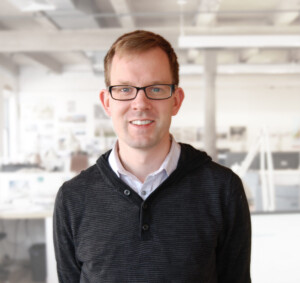
Jeffry Burchard is Managing Partner & Principal at Machado Silvetti and has taught continuously at the GSD for twelve years. After serving as a Design Critic in Architecture from 2012-2017, Burchard was appointed as Assistant Professor in Practice of Architecture following a search in 2017. Following a B.A. and MArch from the University of Idaho College of Art and Architecture, Burchard enrolled in our own MArch II program, which he graduated from with distinction in 2008. Upon graduation from the GSD, Burchard began work in the office of Machado Silvetti, first as a Senior Designer, and was named Partner & Principal in 2015. At the GSD, Burchard has offered instruction in Core Design Studios, thesis and professional practice and is the school’s representative to the Boston Society for Architecture (BSA). At the BSA Jeffry co-created and hosted the Now-Practice-Now workshop series and he created and hosted the Opening Soon online lecture series. Jeffry received the 2020 AIA Young Architects Award for his demonstrated commitment to excellence in design, professional practice, and education. He regularly reviews student work around the world, and he has served on several professional juries including the AIA San Francisco and AIA Montana Design Awards and the Liberty Museum ideas competition. Burchard’s work and writings have been featured in publications such as commonedge, CLOG, IntAR, Competition, Architect, Architecture Record, Domez, Clarin, and the Architect’s Newspaper.
Danielle Choi (MLA ’08) promoted to Associate Professor of Landscape Architecture
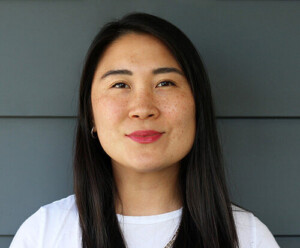
Danielle Choi joined the GSD as a Daniel Urban Kiley teaching fellow in 2016 and subsequently as Assistant Professor. Choi has taught and coordinated core landscape architecture studios, led design research seminars, advised design thesis students, and has had an effective voice in the department’s curricular development and focus on student well-being and belonging. Prior to joining the GSD, Choi practiced as a landscape architect for nearly a decade in the United States and Europe, and her teaching has deep roots in practice and is enriched by a continued commitment to the influence of practice on design pedagogy. Choi’s writing on the cultural practices of landscape infrastructure and technology has been published in the Journal of Architectural Education, Harvard Design Magazine, Studies in the History of Gardens & Designed Landscapes, and Landscape Architecture. Choi has also taught studio in urban design at Columbia University. She is a licensed landscape architect and has practiced with Topotek in Berlin and Michael Van Valkenburgh Associates (MVVA) in New York. As a senior associate at MVVA, she led strategy and design of complex urban landscapes and managed large, multi-disciplinary teams. Choi holds a degree in art history from the University of Chicago and a Master in Landscape Architecture from the GSD, receiving the Jacob Weidenmann award for excellence in design.
GSD Faculty, Alum, and Student Win 2023 Graham Foundation Grants
Members of the Harvard Graduate School of Design (GSD) community are among recipients of new project grants from the Graham Foundation for Advanced Studies in the Fine Arts . Announced in late May, the Foundation’s 2023 grants present nearly $560,000 in funding to support 64 projects by 93 individuals and collaborators who are “working to realize innovative and interdisciplinary ideas that contribute critical perspectives on architecture and design.” The funded projects include publications, research programs, exhibitions, films, podcasts, digital initiatives, public programs, and other formats that further ideas, dialogues, and new understandings of architecture.
The GSD awardees and their projects are:
Yun Fu, Design Critic in Urban Planning and Design, for the publication Thinking and Building on Shaky Ground. Building with earthquakes is a familiar yet persistent design problem for resilient construction on all continents. The book elaborates on various factors for earthquake-resilient architecture in six thematic chapters that explore the design strategies of lightness, quickness, exactitude, visibility, multiplicity, and consistency. These factors allow designers to develop contextual solutions that marry technical know-how with social and cultural understanding, ranging in scale from buildings to furniture and urban master plans.
Dana McKinney, Design Critic in Urban Planning and Design, for Black—Still, an installation that offers an accessible entry point into architecture. Situated within the Craft Contemporary’s courtyard in Los Angeles, the reverential volumes are responsive to various obstacles beneath the surface, on the ground, and above. The prism’s glossy black finish evokes the tar running below the ground’s surface—the use of the color black frames an introspective space. Black is celebrated as “clean,” “pure,” and “good,” and is a source of collective healing. Its blackness subverts traditional and modernist notions of whiteness, presenting novel and diverse expressions of architecture.
Anna Bokov (MArch ’04) for the publication From Method to Style: Elements of Spatial Composition and Architectural Pedagogy after Vkhutemas. The publication centers on Elements of Spatial Composition, a textbook published in 1934 by a group of former Vkhutemas faculty who sought to salvage the pedagogical methods of that avant-garde school at the onset of Stalin’s stylistic mandates in the Soviet Union.
Curry J. Hackett (MAUD ’24) for Drylongso: Imaging the Black Landscape, a research project that incorporates oral histories and archival material to inform installations, writing, craft, and drawings that collectively render everyday life of Black lands in the American South. Drylongso (a Gullah-derived word meaning “ordinary” or “same old”) is an indexing and speculation of the geographies and landscapes shaped by Black cultural production. Hackett was a finalist for the 2022 Wheelwright Prize for his proposal “Drylongso: Sociospatial Tropes of the African Diaspora.”
Nahyun Hwang (MArch ’01) and David Eugin Moon (MArch ’01), of N H D M Architects, present Migrating Futures, an ongoing project that investigates the historical and contemporary geographies of diverse diaspora communities and transnational migrant workers within Korea and across Asia. While subjected to the enduring colonial legacy of subjugated and racialized laboring bodies and extremely precarious work and living conditions, the ostensibly transient global subjects shape and embody emergent and hyper-local spatial typologies, new socialities, and potently intersectional cultural and agentive capacities.
The Graham Foundation will announce grants to organizations, as well as winners of the 2023 Carter Manny Award, later this year.
Loeb Fellowship Announces Incoming Class of 2024
The Loeb Fellowship at the Harvard Graduate School of Design (GSD) has chosen the 2024 Class of Loeb Fellows: nine innovators, problem solvers, visionaries, and practitioners who lead the charge for social justice and transformative change. They work in fields as diverse as post-disaster support, cultural infrastructure, land ownership reform, and climate justice.
Every academic year, the Loeb Fellowship at Harvard GSD welcomes a new cohort of gifted mid-career professionals. They arrive from diverse backgrounds but share a passion and common purpose: to strengthen their abilities to advance equity and achieve positive social outcomes. During their 10-month residency, Loeb Fellows immerse themselves in a rich academic environment, auditing courses at Harvard and MIT, exchanging insights, and expanding professional networks. They also engage with Harvard GSD students and faculty, participate as speakers and panelists at public events, and convene workshops and other activities that encourage knowledge sharing and creation. Throughout, Loeb Fellows consider how they might refocus their careers and broaden the impact of their work.
The incoming cohort of 2024 Loeb Fellows are:
Catherine Buell
Former Director, Amazon Housing Equity Fund / Washington, DC, USA
Akeem Dixon
Founder and CEO, The Intersect / Philadelphia, PA, USA
Henry Grabar
Staff Writer, Slate / Paris, France and New York, NY, USA
Mavis Gragg
CEO, HeirShares / Durham, NC, USA
Maria-Mercedes Jaramillo Garcés
Secretary of Planning, City of Bogotá / Bogotá, Colombia
Adi Kumar
Executive Director, Ndifuna Ukwazi / Cape Town, South Africa
Line Ramstad
Founder and Director, Gyaw Gyaw / Vormsund, Norway
Kannan Thiruvengadam
Director, Eastie Farm, Inc. / Boston, MA, USA
Joseph Zeal-Henry
Co-Founder, SOUND ADVICE and Capital Development Manager, Greater London Authority / London, UK 2024 Loeb/ArtLab Fellow
“Every year, Loeb Fellows add a special, irreplaceable energy to the GSD community. They come from all over the world, bringing with them such rich and varied experiences and an ambitious optimism that opens our eyes to what’s possible. At the GSD, we are incredibly fortunate to count them among us, and I can’t wait to welcome next year’s class in Cambridge,” says Sarah M. Whiting, Dean and Josep Lluís Sert Professor of Architecture at the GSD.
“When the Selection Committee makes its decision in the spring, we already know these individuals are highly accomplished and show great promise for growing their influence,” observes Loeb Fellowship Curator John Peterson. “Our work is to recognize the opportunity this educational experience presents for and the catalyzing effect being within the cohort has on their potential.” Peterson is an architect, activist, and curator of the Loeb Fellowship program.
After their year of Harvard GSD residence, Loeb Fellowship alumni join a powerful worldwide network of over 450 lifelong Loeb Fellows. Many are recognized leaders, like Theaster Gates (LF ’11), Toni Griffin (LF ’98), Alessandro Petti (LF ’17), Emmanuel Pratt (LF ’17), Ana María Durán Calisto (LF ’11), Stephanie Hankey (LF ’22), Michael Uwemedimo (LF ’22), Jordan Weber (LF ’22), and Mpho Matsipa (LF ’22), all of whom are represented at the Venice Biennale Architettura 2023. Tau Tavengwa (LF ’18) is on the Biennale Jury, and incoming Loeb Fellow Joseph Zeal-Henry is a co-curator of the British Pavilion 2023.
The Loeb Fellowship continues its collaboration with the ArtLab at Harvard University to welcome Joseph Zeal-Henry as its 2024 Loeb/ArtLab Fellow. Zeal-Henry will have access to studio space and will be able to engage with the ArtLab community and its intellectual resources and networks. As the third Loeb/ArtLab Fellow, he joins past Artist Fellows Jordan Weber (LF ’22) and Dario Calmese (LF ’23).
ArtLab Director Bree Edwards says, “I am excited to have Joseph Zeal-Henry join us as he investigates how arts and culture are central to urban planning and policy. Joseph’s cross-sector research, storytelling, and the innovative ways he brings people together align with the mission of ArtLab.”
The Loeb Fellowship traces its roots to the late 1960s, when John L. Loeb directed a Harvard GSD campaign based on the theme of “Crisis.” Loeb saw the American city in disarray and believed Harvard could help. He imagined bringing promising innovators of the built and natural environment to Harvard GSD for a year, challenging them to do more and do better, convinced they would return to their work with new ideas and energy.
John L. and Frances Loeb endowed the Loeb Fellowship as part of their gift to the “Crisis” campaign. They worked closely with William A. Doebele, the Frank Backus Williams Professor of Urban Planning and Design (now Emeritus), the program’s founding curator, who guided the program from the Class of 1971 until 1998, and shaped an experience that has had a powerful impact on generations of urban, rural, and environmental practitioners.

